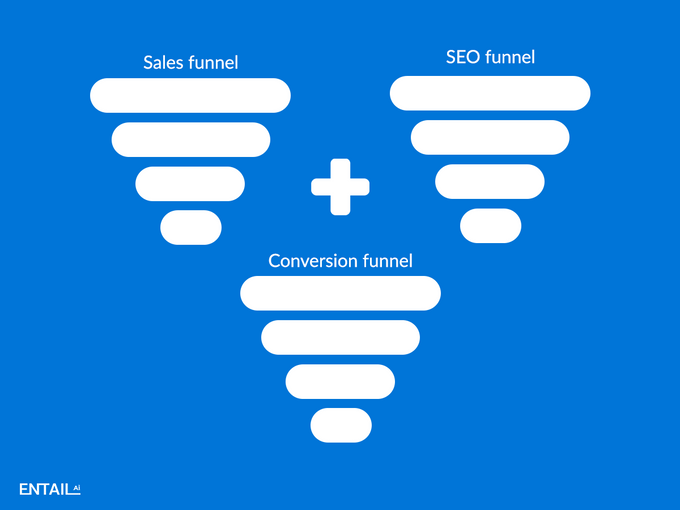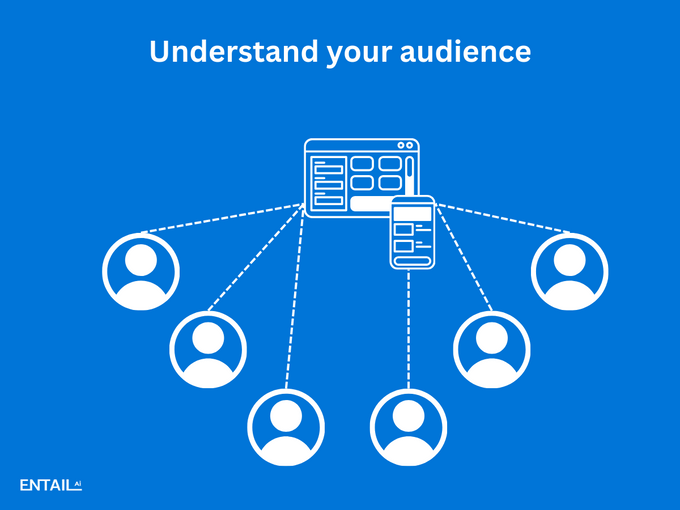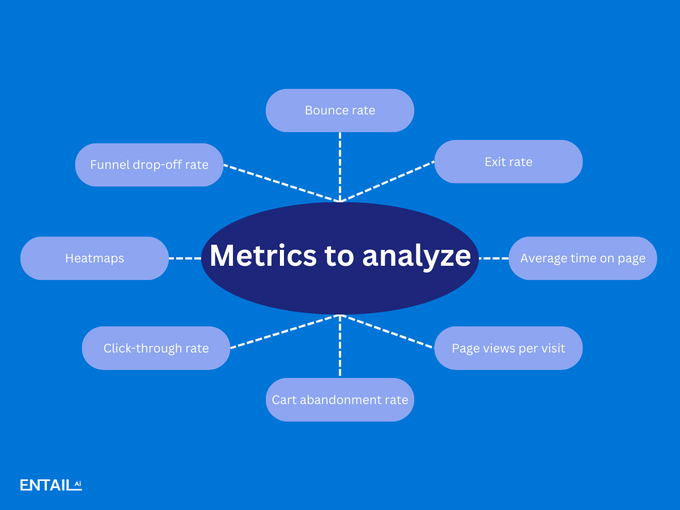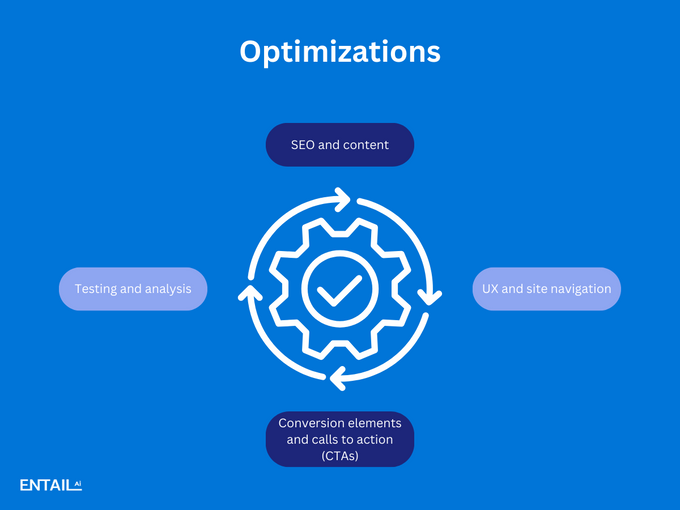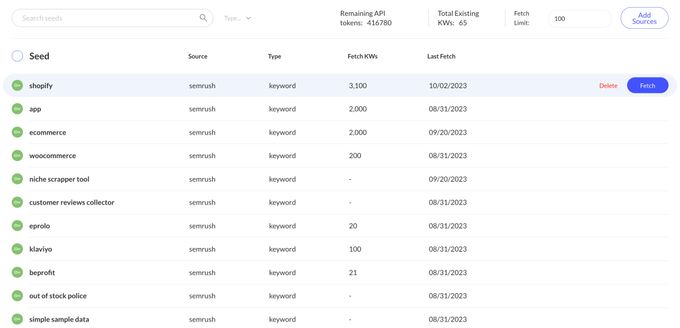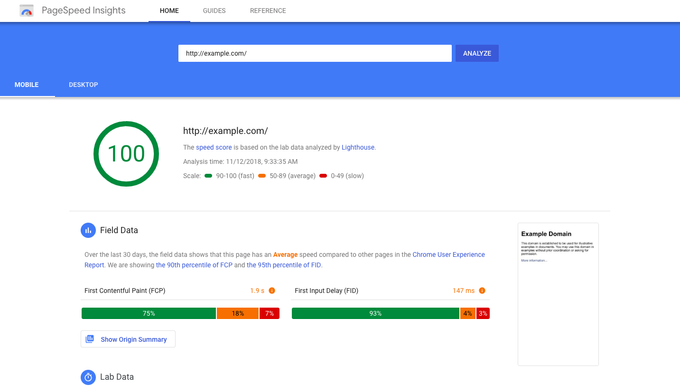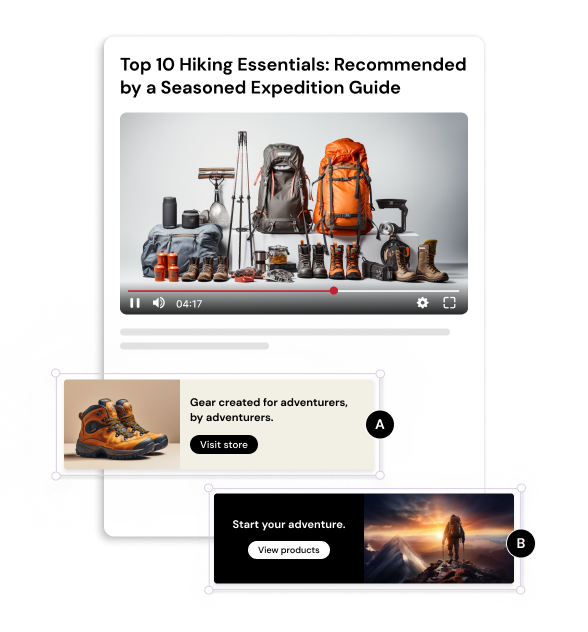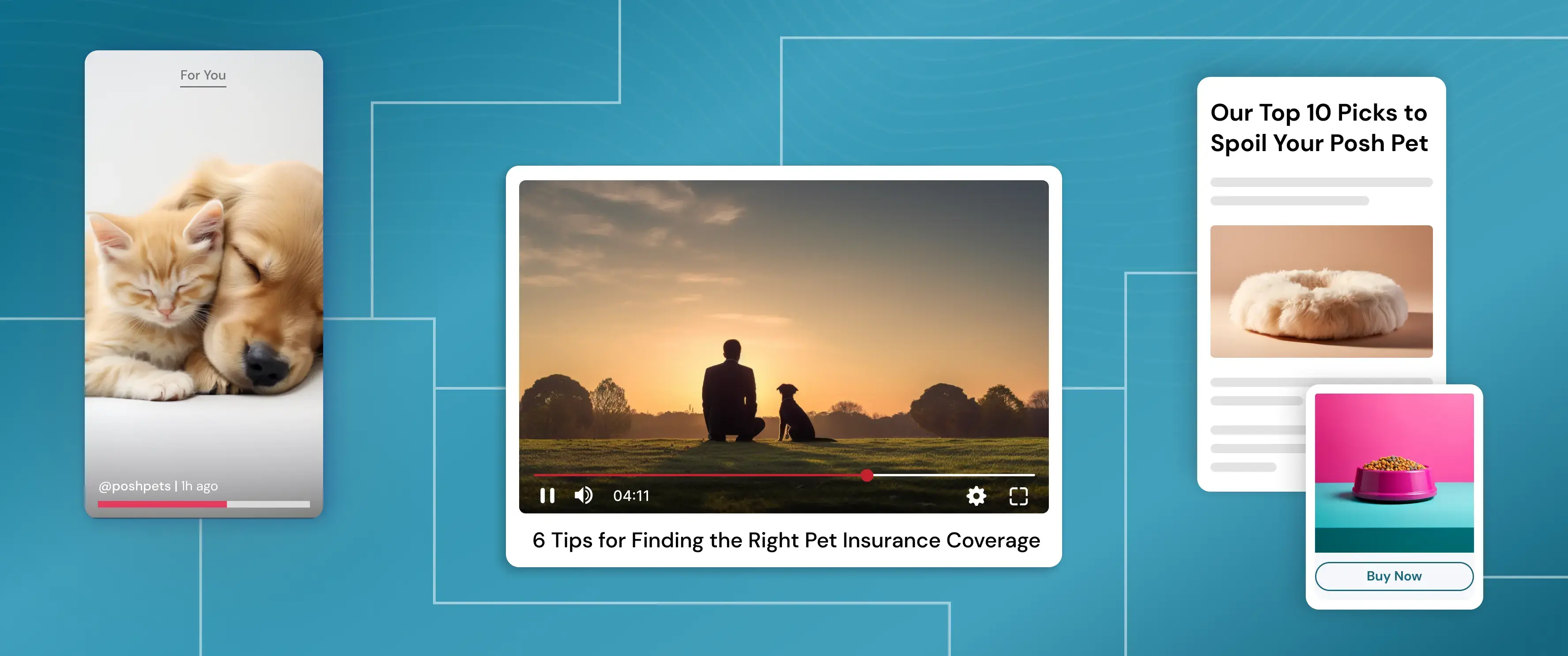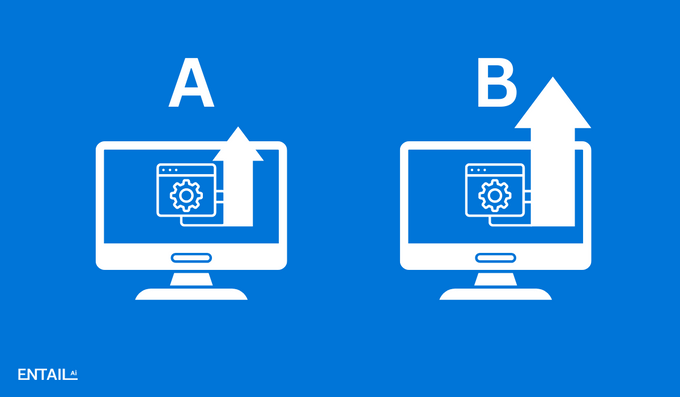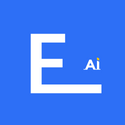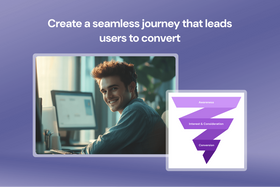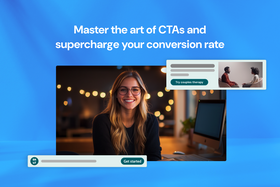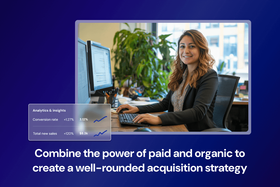Conversion funnel optimization: A step-by-step guide to converting organic traffic
Understand your users and their friction points to deliver a data-backed optimized conversion funnel.
Updated April 4, 2025
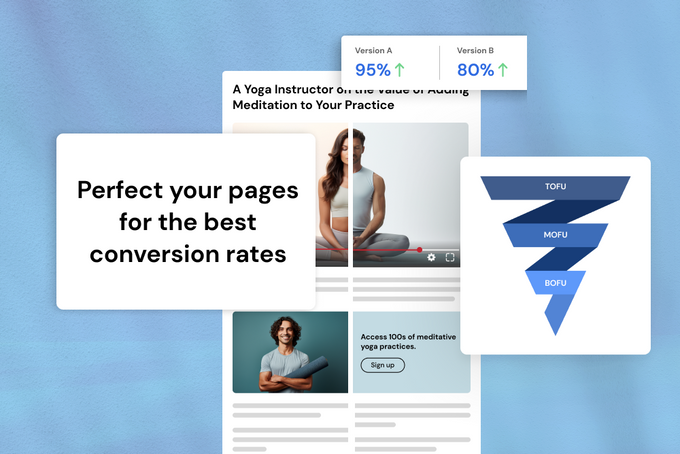
Industries vary in what they describe as an optimal conversion rate. A general, non-industry-specific number to aim for is between 2% and 5%, but how can you improve yours if you're not there yet? You need to optimize your conversion funnel for maximum results.
At its core, conversion funnel optimization is about understanding and optimizing the user journey. It's a process of analyzing customer behavior, identifying friction points, and crafting a seamless experience that guides users toward conversion.
What's in this guide
- Integrating the SEO and sales funnels
- Understanding your audience
- Creating valuable content
- Understanding friction points
- Optimizing your content
Integrating the SEO and sales funnels
Integrating SEO and sales strategies with the conversion funnel is vital for guiding potential customers from initial awareness to the final purchase. SEO is paramount at the funnel's outset, attracting targeted traffic through keyword research, on-page optimization, and link-building efforts. This initial stage lays the groundwork for the entire user journey, ensuring the right audience is reached from the start.
» Compare SEO vs. paid search to find the best strategy for you.
As prospects move through the funnel, content marketing plays a crucial role in nurturing their interest, and leveraging high-quality, expert content is key to guiding them from awareness to consideration. This seamless transition prepares them for the sales funnel, where the focus shifts to converting prospects into paying customers.
Effective integration involves aligning marketing messages and the user experience across all digital touchpoints with the sales process. Implementing tools and methods for a smooth transition of leads from marketing to sales ensures that each component of the funnel works in unison. Ultimately, a cohesive strategy that combines SEO, content marketing, and sales efforts can optimize the conversion funnel, driving both traffic and conversions in a unified and efficient way.
» Discover why you should combine CRO and SEO.
4 steps to optimizing your conversion funnel
While optimization involves leveraging data, tools, and best practices, it's also a creative endeavor that allows you to forge the pathway to user action. You're essentially designing the bridge between your offer and your audience's wants and needs.
» Explore advanced conversion funnel optimization strategies to boost sales.
1. Understand your audience
Understanding your target audience is essential—it's the foundation of your funnel. Effective campaigns depend on deep insights into their needs, behaviors, and mindsets. It's about empathizing with your ideal customers' problems, motivations, and hesitations concerning your offerings. You need to know what attracts them, what concerns might arise, and what convinces them to purchase.
With such insights, you can create content for every stage of the funnel, choosing the messages, formats, visuals, and calls to action that meet their needs for optimal movement toward conversion. Although funnel optimization employs strategic tools and data, its success ultimately hinges on a profound understanding of the audience you aim to convert.
2. Create valuable content to fuel the funnel
Beyond empty or generic messages, content must offer clear value aligned with your audience's needs and desires. Valuable content establishes credibility and builds topical authority, builds trust by addressing core problems, and guides prospects with insights and multimedia that resonate with their challenges and aspirations. Through interactive tools, videos, and stories that engage and demonstrate how your product fulfills your users' needs, your content optimizes the funnel.
» Learn how to maintain authenticity when creating content with AI.
3. Understand friction points
If you're not seeing the conversions you expected, something is likely preventing your customers from moving down the funnel. These are called friction points. They slow down the user journey and require immediate attention.
At this point of your optimization process, you need to look at some metrics for each stage of the SEO funnel to gain insight into your users' behaviors on the site. These are the top 8 conversion metrics to analyze before optimizing:
Bounce rate: This is the percentage of visitors who leave your site after viewing only one page. A high bounce rate could suggest that your landing pages are irrelevant or engaging enough to encourage further interaction.
Exit rate: This metric identifies the specific pages where visitors are most likely to leave your site. Analyzing exit rates can help pinpoint pages that may be causing visitors to drop out of the conversion funnel.
Average time on page: Look at how long visitors spend on specific pages. Shorter than expected time on detailed pages may indicate that the content is not engaging or relevant or that the page layout is confusing.
Page views per visit: This metric helps you understand how many pages, on average, a visitor views before leaving your site. A low number might suggest that visitors are not finding what they're looking for or are encountering usability issues.
Cart abandonment rate: A high abandonment rate can signal issues with the checkout process, such as unexpected costs, complicated navigation, or lack of trust signals.
Click-through rate (CTR): CTR measures how often people who see your call-to-action (CTA) click it. A low CTR can indicate that your CTAs are not compelling or visible enough or that they're not aligned with your audience's interests.
Heatmaps: Heatmap tools show where visitors click, move, and scroll on your pages. This visual data can help identify areas of a page that attract interest or are being ignored.
Funnel drop-off rates: Here you identify specific stages where significant losses occur. Tools like Google Analytics can track these drop-offs, allowing you to focus optimization efforts where they're needed most.
4. Start optimizing your content
Once you've identified the points of friction, you can begin optimizing with data-backed confidence.
SEO and content optimization
- Keyword optimization: Ensure your content includes relevant keywords to improve your visibility in search engine results and attract more targeted traffic to your site.
- Meta descriptions and titles: Optimize meta descriptions and titles to be engaging and keyword-rich. This can improve click-through rates from search engine results pages.
- Quality content: Produce high-quality, informative content that addresses the needs and questions of your target audience. Content should be engaging, credible, and offer real value to readers.
- Content structure: Organize content with clear headings, bullet points, and short paragraphs to improve readability. Incorporating tables, images, and lists can also help break up text and make content more accessible.
User experience (UX) and site navigation
- Easy navigation: Ensure that your site is easy to navigate, with a logical structure and clear menus. This helps visitors find what they're looking for without frustration.
- Speed optimization: Improve page loading times, as 40% of users abandon a site that takes over 3 seconds to load. This can involve optimizing images, leveraging browser caching, and minimizing the use of heavy scripts.
- Mobile optimization: 63% of organic search engine visits come from mobile, so ensure your website is fully optimized for these devices.
» Discover how to optimize your site for conversions.
Conversion elements and calls to action (CTAs)
- Clear CTAs: Use clear and compelling calls to action that guide users toward taking the next step, whether it's making a purchase, signing up for a newsletter, or downloading a resource.
- Streamline the conversion process: Simplify the conversion process as much as possible. In terms of e-commerce CRO, this means an easy checkout experience with minimal steps and clear instructions.
- Visual elements: Optimize the use of visual elements like images and videos. Ensure they are high-quality, relevant, and support the message of your content.
» Discover the top CRO best practices to boost conversions.
Engaging interactive elements
- Incorporate widgets and interactive elements: Use interactive elements like quizzes, calculators, or engaging widgets that can help personalize the user experience and guide visitors toward making a decision.
Testing and analysis
- A/B testing: Regularly conduct A/B tests on different elements of your website, such as headlines, CTAs, images, and page layouts, to see what works best in engaging visitors and driving conversions.
- Use of analytics tools: Employ analytics tools to gather data on visitor behavior, such as heatmaps, click tracking, and funnel analysis. This data can help identify friction points and areas for improvement.
» Discover the best CRO tools to supercharge conversions.
Continuous improvement
- Feedback loops: Implement mechanisms for collecting customer feedback, such as surveys or feedback forms. This direct input can provide invaluable insights into user needs and pain points.
- Competitor analysis: Regularly review your competitors' actions and learn from their successes and mistakes. This can provide ideas for optimization and differentiation.
» Learn all about Entail's unique approach to solving SEO.
Better conversions start with putting your audience first
We've spoken a lot about the hard facts of optimization, but always remember that this is a space to connect with your users authentically. You have an opportunity to be creative in your approach to working with the potential customers you engage with. Use the data to inform your creative approach to delivering the authoritative information your audience is looking for.
Best practices are useful and can guide you to a level of success, but rising up with a unique way of presenting your product or service will be more impactful than being a copy of your competitors.
FAQs
What is a conversion funnel in marketing?
The conversion funnel is a visual representation of the stages a potential customer goes through before making a purchase or taking a desired action. These stages typically include awareness, consideration, and decision.
How do you work out your conversion rate?
To work out your conversion rate (CVR) you need to take the number of conversions (users taking the desired action/achieving a specific goal) and divide it by the number of visitors to your page. Let's say you get 25 conversions out of 1300 visitors.
25/1300=0.019. Multiply this by 100 to get a CVR percentage value of 1.9%
Why is conversion rate an important metric?
Conversion rates help you understand your website and content's overall performance in the larger operations of your business. You want to know what measures you've put in place to guide users to a specific goal have worked. To know which is working you need to understand where conversions are happening and why.
